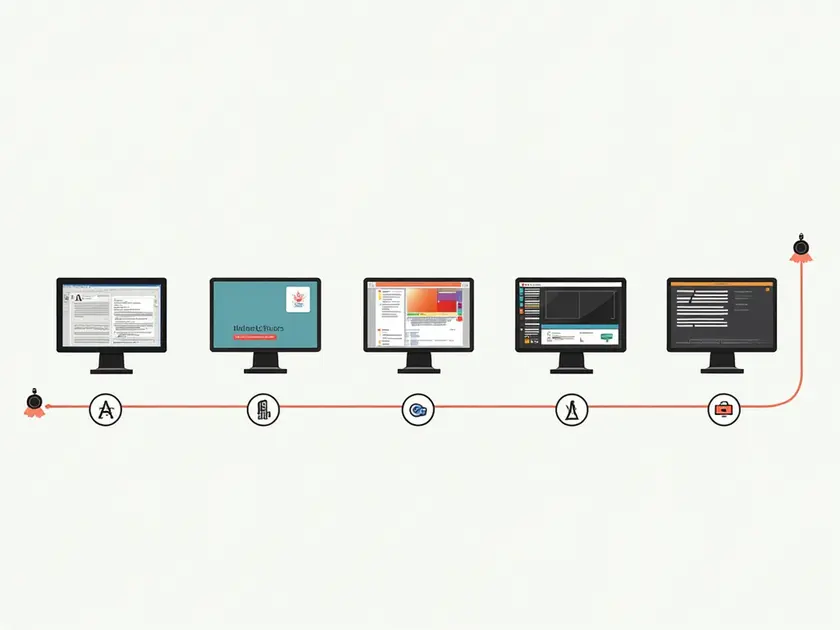The Evolution of Graphic Design Software
Graphic design software has come a long way since its inception, revolutionizing the way designers create visual content. From the early days of simple graphic editing tools to the sophisticated programs used today, the evolution of graphic design software has been a journey marked by innovation and creativity.
As we delve into the history of graphic design software, explore the transition from traditional print design to the digital landscape, and forecast future trends in the industry, it becomes clear that the role of technology in graphic design continues to shape the way we communicate visually.
The History of Graphic Design Software
Graphic design software has evolved significantly over the years, shaping the way designers create visual content. From its humble beginnings to the sophisticated tools available today, the history of graphic design software is a fascinating journey.
The Early Days of Graphic Design Software
- Early graphic design software was limited in functionality and primarily focused on basic drawing tools.
- One of the first graphic design programs, MacPaint, was introduced in 1984 for the Apple Macintosh computer.
The Rise of Adobe Photoshop
- Adobe Photoshop, launched in 1988, revolutionized graphic design with its advanced photo editing capabilities.
- Photoshop quickly became the industry standard for digital image manipulation and graphic design.
Emergence of Vector Graphics Software
- Vector graphics software, such as Adobe Illustrator, gained popularity for their ability to create scalable and precise designs.
- Illustrator’s introduction in 1987 marked a significant milestone in the history of graphic design software.
3D Design Software and Beyond
- With the advancement of technology, 3D design software like Autodesk Maya and Cinema 4D have become essential tools for creating three-dimensional graphics.
- Today, graphic designers have access to a wide range of software options catering to various design needs, from web design to animation.
As technology continues to evolve, the future of graphic design software holds endless possibilities, promising even more innovative tools and features for designers to explore.
From Print to Digital: A Revolution in Graphic Design
The transition from traditional print design to digital graphic design has revolutionized the way designers create and communicate their ideas.
The Impact of Digital Tools
- Digital tools have made design processes more efficient and streamlined.
- Designers can now easily experiment with different concepts and ideas.
- Collaboration among designers and clients has been greatly enhanced through digital platforms.
Advantages of Digital Design
- Designs can be easily edited and revised in real-time.
- Interactive elements can be incorporated into designs for a more engaging user experience.
- Designs can be easily adapted for various digital platforms and devices.
The Role of Creativity in Digital Design
While digital tools have transformed the design process, creativity remains at the core of graphic design. Designers must still think critically and creatively to produce visually compelling and effective designs.
Challenges of Digital Design
- Keeping up with rapidly evolving technology and trends can be challenging for designers.
- Ensuring designs are accessible and user-friendly across different devices and platforms.
- Balancing creativity with the constraints of digital tools and formats.
In conclusion, the shift from print to digital design has opened up new possibilities and challenges for graphic designers, pushing the boundaries of creativity and innovation in the digital age.
Future Trends in Graphic Design Software
In the ever-evolving world of graphic design, new trends in software continue to emerge, shaping the way designers work and interact with their projects. These trends are not only influenced by technological advancements but also by the changing needs and preferences of designers and clients alike.
1. Artificial Intelligence Integration
- AI technology is increasingly being integrated into graphic design software, allowing for automation of repetitive tasks and providing intelligent suggestions for design elements.
- Machine learning algorithms are being used to analyze user behavior and preferences, enabling software to adapt and personalize the design process.
2. Augmented Reality and Virtual Reality
- AR and VR technologies are revolutionizing the way designers visualize and present their work, offering immersive experiences for both designers and clients.
- Design software with AR and VR capabilities allows for real-time collaboration, enabling multiple stakeholders to interact with designs in a virtual environment.
3. Cloud-Based Collaboration
- Cloud-based graphic design software is facilitating seamless collaboration among team members, regardless of their location.
- Real-time editing, version control, and instant feedback features are enhancing productivity and streamlining the design workflow.
4. Sustainability and Eco-Friendly Practices
- Design software developers are increasingly focusing on sustainability by incorporating eco-friendly practices into their products.
- Features like energy-efficient design tools, recyclable materials, and carbon footprint tracking are becoming more prevalent in graphic design software.
5. Cross-Platform Compatibility
- With the rise of multiple devices and operating systems, graphic design software is adapting to ensure seamless compatibility across platforms.
- Designers can now work on their projects seamlessly from desktops, laptops, tablets, and smartphones, without compromising on functionality or design quality.






